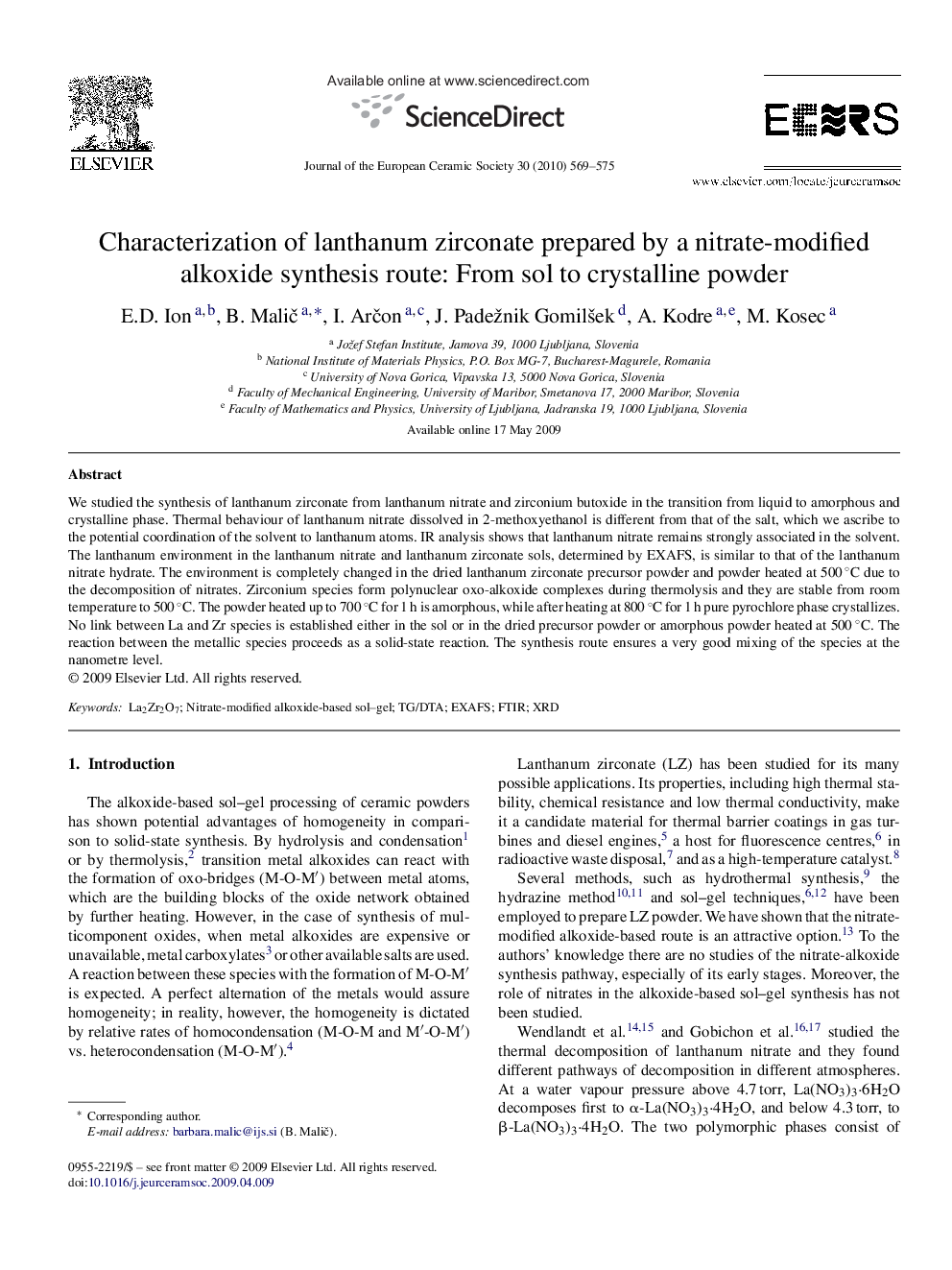| Article ID | Journal | Published Year | Pages | File Type |
|---|---|---|---|---|
| 1475016 | Journal of the European Ceramic Society | 2010 | 7 Pages |
We studied the synthesis of lanthanum zirconate from lanthanum nitrate and zirconium butoxide in the transition from liquid to amorphous and crystalline phase. Thermal behaviour of lanthanum nitrate dissolved in 2-methoxyethanol is different from that of the salt, which we ascribe to the potential coordination of the solvent to lanthanum atoms. IR analysis shows that lanthanum nitrate remains strongly associated in the solvent. The lanthanum environment in the lanthanum nitrate and lanthanum zirconate sols, determined by EXAFS, is similar to that of the lanthanum nitrate hydrate. The environment is completely changed in the dried lanthanum zirconate precursor powder and powder heated at 500 °C due to the decomposition of nitrates. Zirconium species form polynuclear oxo-alkoxide complexes during thermolysis and they are stable from room temperature to 500 °C. The powder heated up to 700 °C for 1 h is amorphous, while after heating at 800 °C for 1 h pure pyrochlore phase crystallizes. No link between La and Zr species is established either in the sol or in the dried precursor powder or amorphous powder heated at 500 °C. The reaction between the metallic species proceeds as a solid-state reaction. The synthesis route ensures a very good mixing of the species at the nanometre level.
